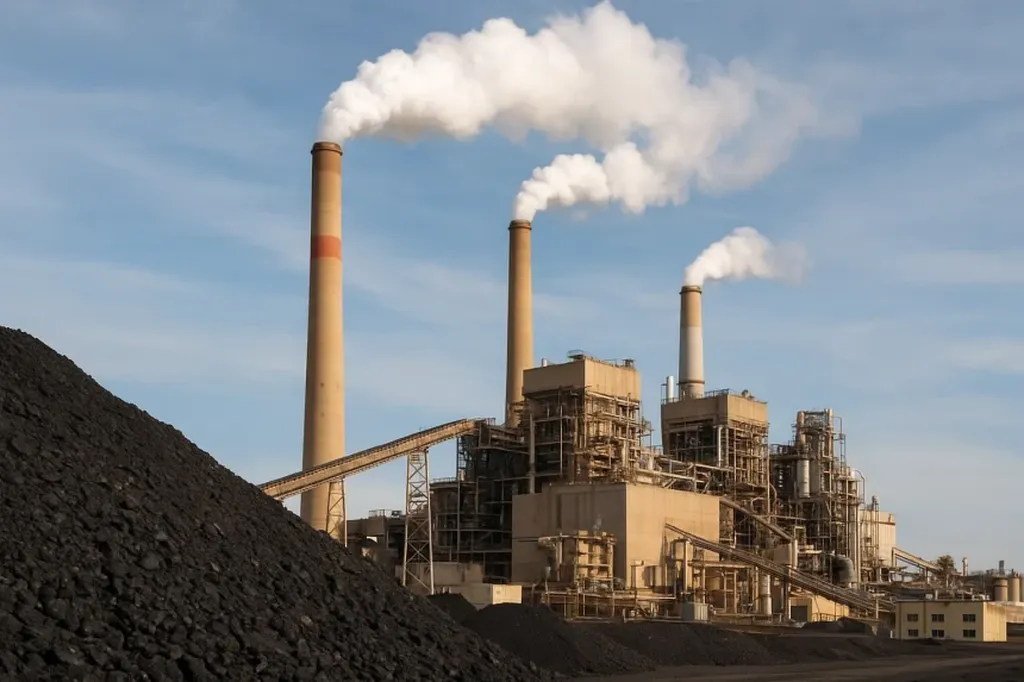The Department of Energy (DOE) has unveiled a Notice of Funding Opportunity (NOFO) that could steer up to $100 million toward modernizing and restoring the nation’s existing coal plant fleet. This initiative, administered by the DOE’s National Energy Technology Laboratory (NETL) under the Office of Fossil Energy and Carbon Management, seeks proposals in three key areas: advanced wastewater management, dual-fuel switching capability, and coal-natural gas cofiring systems. The announcement comes on the heels of a broader $625 million investment declared by the DOE in September, targeting various coal-related projects, including plant recommissioning and rural electrification.
The NOFO’s timing aligns with the Trump administration’s declaration of a national energy emergency in January 2025, aimed at addressing a deterioration in resource adequacy. The DOE’s July 2025 Resource Adequacy Report highlighted that the retirement of firm thermal generation has outpaced the deployment of replacement capacity, posing reliability risks. Executive Order 14156, issued in January 2025, directed federal agencies to utilize all lawful authorities to “preserve and restore” generation capacity, ensuring reliability, affordability, and security of supply.
The DOE identifies nearly 100 GW of operable coal-fired capacity as a near-term lever for stabilizing the bulk power system, particularly in regions facing constrained transmission, surging industrial demand, and reliability risks driven by cycling thermal units beyond their design parameters. “The operational strain created by the increasing penetration of intermittent renewables, insufficient compensation in markets and onerous environmental compliance costs, has forced thermal units to cycle beyond their designed parameters, accelerating wear and raising the risk of forced outages and blackouts,” the NOFO states. This reliability emergency coincides with surging demand from national defense installations, semiconductor fabrication plants, AI data centers, critical mineral processing, and industrial re-shoring, all of which require access to power.
The NOFO seeks applications for demonstration-scale projects to “design, implement, test, and validate three strategic opportunities for refurbishment/retrofit of existing coal power plants.” The application deadline is January 7, 2026, by 5:00 PM ET.
**Advanced Wastewater Management Systems**
The DOE allocates up to $50 million for advanced wastewater management systems that go beyond compliance. The agency targets transformational treatment technologies capable of recovering water and other value-added byproducts from coal-plant wastewater streams. These systems must “reduce the use and manage the discharge of water in power plant operations” while improving environmental performance. The DOE seeks technologies that can economically treat coal combustion residual (CCR)-related waste, cut O&M costs tied to regulated wastewater streams, and support coproduction of marketable byproducts to strengthen plant economics. Systems must demonstrate a path to meaningful water-recovery efficiencies, reduced discharge volumes, and integration with existing wastewater and ash-handling infrastructure.
**Dual-Firing Retrofits**
Up to $25 million is set aside for dual-firing retrofits designed to increase the operational flexibility of the existing coal fleet. The DOE wants retrofit systems that allow a unit to switch automatically between coal and natural gas without compromising emissions limits, Maximum Continuous Rating (MCR), heat-rate performance, or component life. Qualifying systems must demonstrate the ability to move from 100% coal to 100% natural gas (offline and under automatic control) while maintaining full emissions compliance. Required engineering elements include burner and overfire-air modifications, heat-transfer surface adjustments, potential emissions controls updates, and automated burner-management controls capable of safely handling transitions between fuels. The DOE notes that successful implementations should reduce exposure to gas-price volatility, cut emissions, and leverage existing infrastructure to extend plant life.
**Coal-Natural Gas Cofiring Systems**
Another $25 million supports coal-natural gas cofiring systems that allow simultaneous combustion of both fuels at varying proportions. The DOE emphasizes that cofiring can drive proportional reductions in mercury, sulfur dioxide (SO₂), nitrogen oxides (NOₓ), particulate matter, and carbon dioxide (CO₂), while lowering the operating and maintenance (O&M) costs and auxiliary power consumption associated with coal-handling equipment. However, the agency also highlights the engineering challenges: natural gas and coal exhibit different flame shapes, heat absorption patterns, and emission characteristics, which often require significant boiler modifications—including changes to the burner, windbox, and heat-transfer surface, as well as upgrades to auxiliaries. Effective fuel mixing is critical, it notes, given that poor mixing can produce uneven heating, excessive ash deposition, temperature imbalances, increased auxiliary load, and higher furnace-exit gas temperatures. The DOE’s objective is to develop transformational boiler systems that automatically and smoothly control any proportion of cofiring, maintain Maximum Continuous Rating

